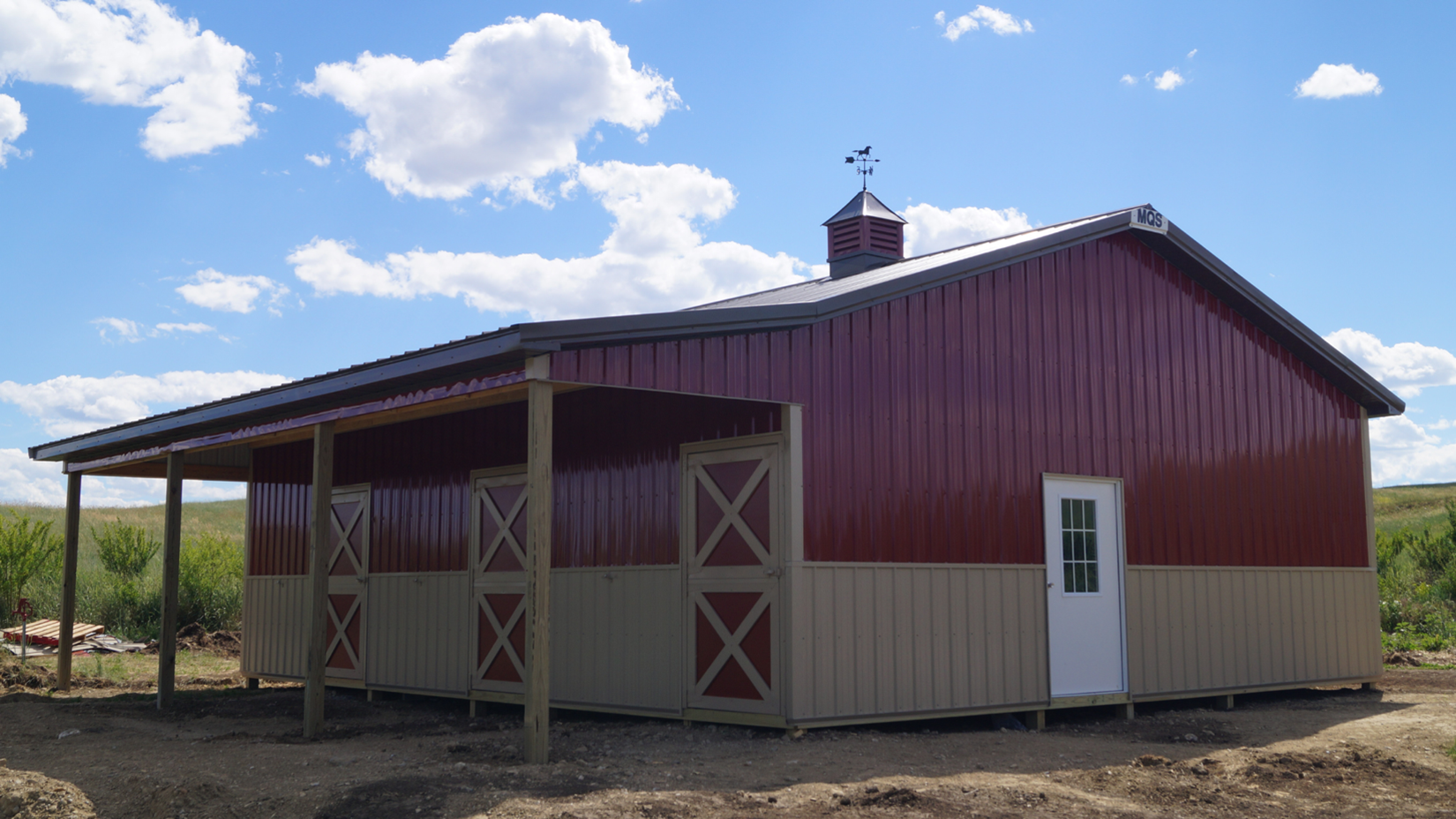Before starting construction on farm buildings in Montana, there are a lot of considerations to make. Once a building is up, there is no going back. Utilize the planning process and follow this guide to help ensure your pole barn is best suited for your needs.
Identifying Needs
How you intend to use your pole building in Montana will require different materials and functions. For example, a horse barn and a garage hobby shop need very different doors, flooring material, windows, plumbing, and electrical needs. Working with Amish barn builders in Montana will guarantee you don’t miss adding any important features.
Size
A common theme we see as custom post frame builders in Montana among previous customers who have a pole barn is wishing they made theirs bigger. Most people don’t fully consider everything they intend to store in their pole barn or underestimate how much they actually have and how large some equipment really is.
Before construction begins, first visualize what you plan to store inside and consider how you’ll use your barn.
For example, if you have an RV, make a note of its size and ensure your building plan will accommodate it in case you want to store it inside your pole barn, even if it’s not your primary intention.
Location
The building site is of extreme importance when planning to construct custom pole barns in Montana. Location includes everything from soil, ground level, the surrounding area, sunlight, accessibility, drainage, etc. Do you plan to use your pole barn to house livestock, a garage, or hobby shop? All of these are different uses for a pole barn yet require different location considerations.
Access for heavy delivery trucks as well as power lines and underground utilities are also to be considered and located before digging into the ground.
Local Codes
During the planning process, consult with your local zoning office about code enforcement in the area where your plan to build your pole building in Montana. Cities vary in their requirements such as size, framework, distance from the property line, and material used. Not following codes can be very problematic and could possibly require the government to intervene until standards are met.
